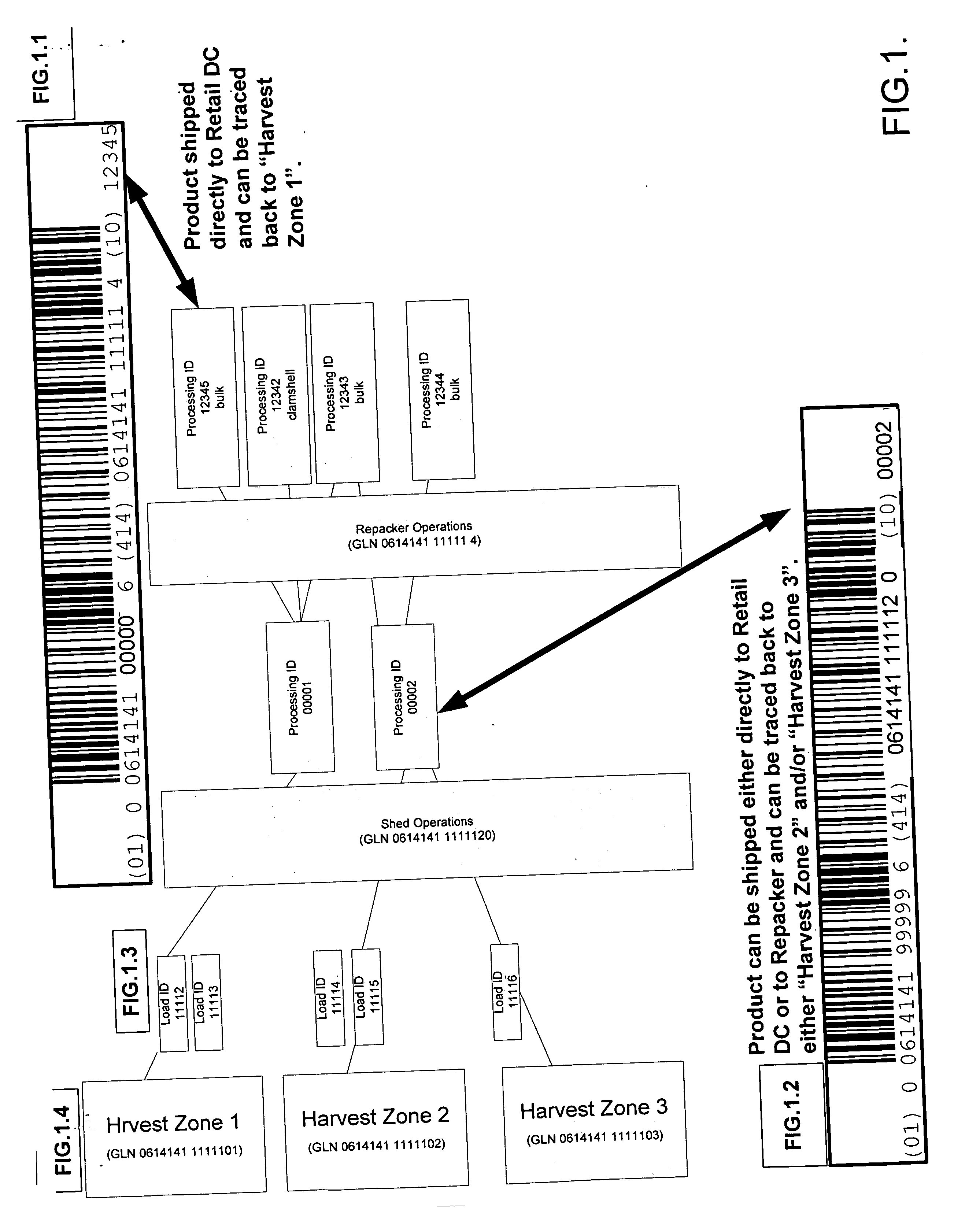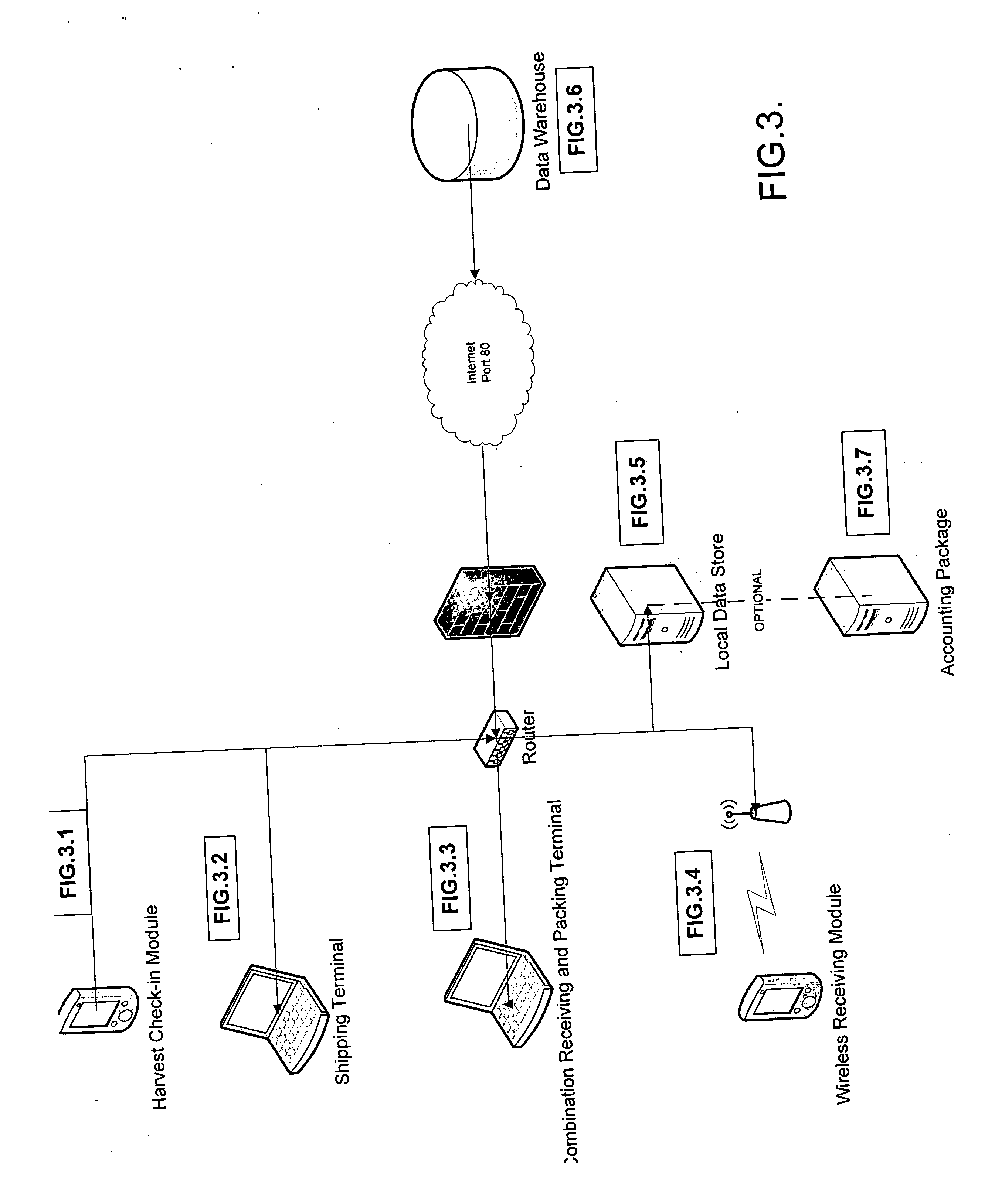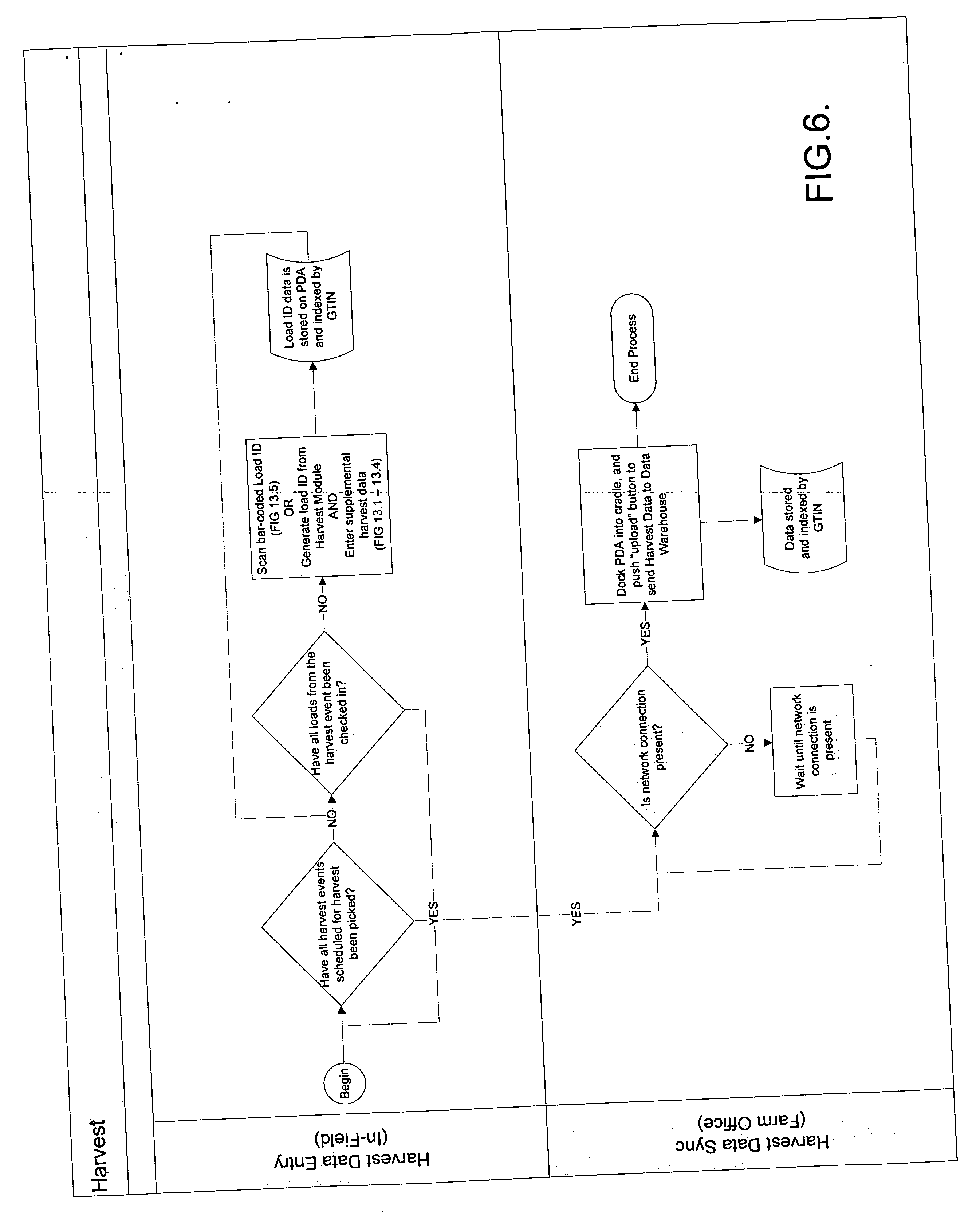Method for managing agricultural produce inventories
a technology for agricultural produce and inventories, applied in chemical methods analysis, instruments, data processing applications, etc., can solve problems such as difficulty in tracing agricultural inventories, requiring downstream customers, and affecting the use of current upcs for farm produce, and the number of information does not contain sufficient information to determine the country of origin, the manufacturer, or any repacker
- Summary
- Abstract
- Description
- Claims
- Application Information
AI Technical Summary
Benefits of technology
Problems solved by technology
Method used
Image
Examples
example i
Harvesting to First Processor Operation
[0081] Picking crews pick a crop from a specific harvest zone into logistical units of measure such as bins, gondolas, or wagons. When the desired shipping quantity is achieved and the load is ready to be transported to a first processor operation, such as a shed, for processing, the picking crew leader or farm manager completes one of the following options.
[0082] OPTION A: A crew leader, for example, fills out traditional multi-form “field ticket” and scans the random 6 digit number in order to “check-in” the load to the QMS Harvest Module. (Note: If this option is used, the process can be used in a “batch” process in which the loads can be “checked-in” after the actual shipping event.
[0083] OPTION B: A crew leader, for example, “Checks-In” the load to PDA based QMS Harvest Module without a traditional field ticket. The system auto-generates a random six digit tracking number and prints two copies of the check-in record to serve as hauling ...
example ii
Tomato Supply Chain Events
[0141] It is recognized that the below described system and method is applicable to fresh produce other than tomatoes.
Bulk Traceability Labeling Specification:
[0142] By way of example only, the present invention includes a method for managing tomato bulk product inventory. A tomato bulk product is labeled using a combination of the case codes (described above) as well as 5-digit PLUs defined by the retail partner. Single-layer flats containing bulk-packed product features a case code layer. Individual fruit will be labeled with a 5 digit PLU that will drive POS transactions without necessitating application for a PMA defined 4-digit PLU. The 5-digit PLU allocated by one retail partner will not necessarily be the same 5-digit number being used by a second retail partner.
Tomato Fixed Weight Package Traceability Labeling Specification:
[0143] In one embodiment, tomato bulk product is configured for sale in 1-pound clamshells, the present invention utiliz...
example iii
Strawberry Fixed Weight Package Traceability Labeling Specification
[0170] The present invention also includes a method or managing the strawberry product inventory. For example, strawberry inventory can be configured for sale in 1-pound clamshells. Such inventory utilizes a custom UPC number with a specific item number that will allow differentiation at retail POS. In addition, each clamshell will include a 24 digit, non-bar coded traceability label affixed to the bottom of the container located on the same sticker as the UPC immediately beneath the human-readable portion of said UPC. This 24 digit will indicate the “range” of clamshells that were originally in a discreet carton that was associated to a specific harvest zone.
PUM
 Login to View More
Login to View More Abstract
Description
Claims
Application Information
 Login to View More
Login to View More - R&D
- Intellectual Property
- Life Sciences
- Materials
- Tech Scout
- Unparalleled Data Quality
- Higher Quality Content
- 60% Fewer Hallucinations
Browse by: Latest US Patents, China's latest patents, Technical Efficacy Thesaurus, Application Domain, Technology Topic, Popular Technical Reports.
© 2025 PatSnap. All rights reserved.Legal|Privacy policy|Modern Slavery Act Transparency Statement|Sitemap|About US| Contact US: help@patsnap.com



